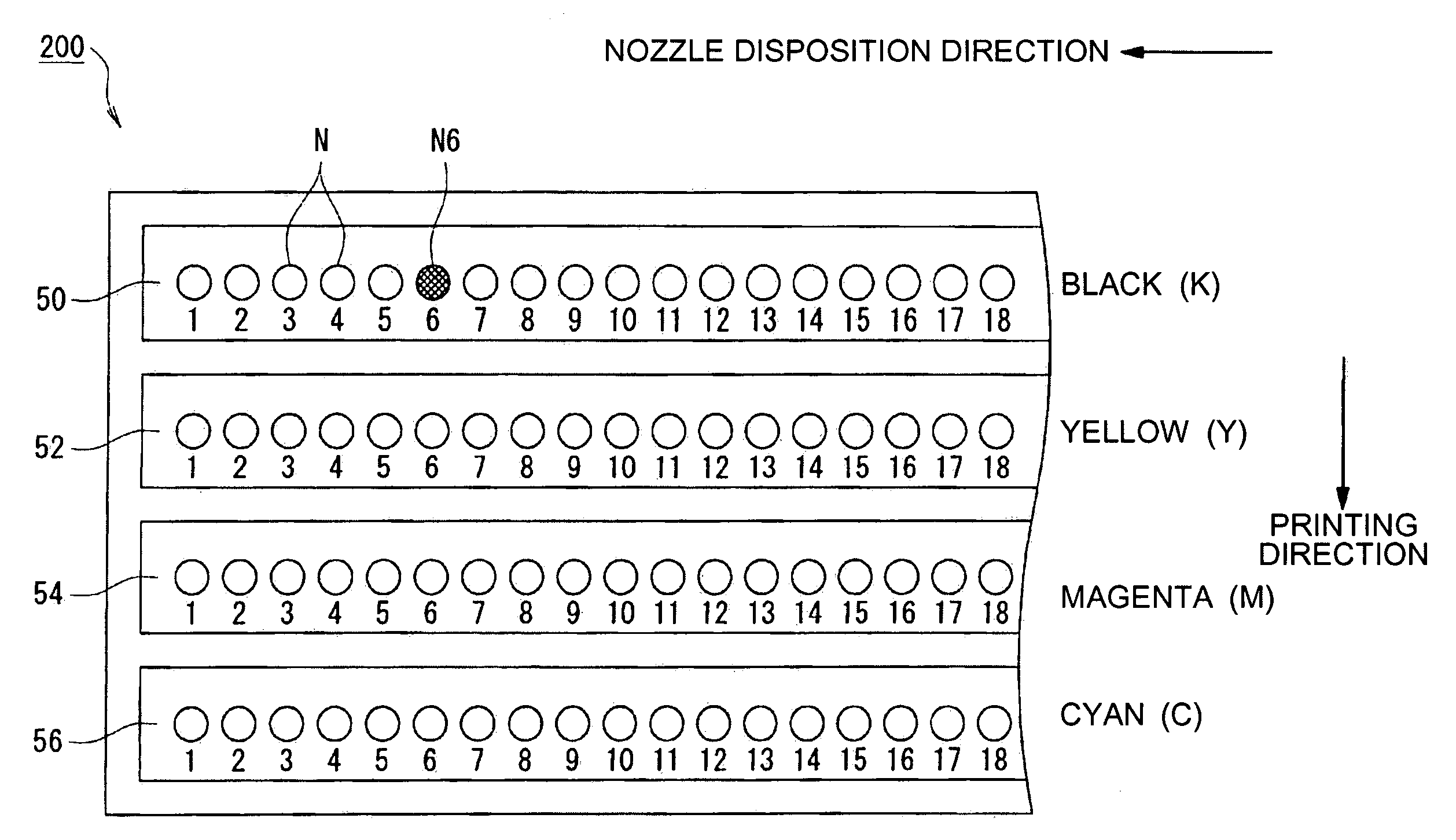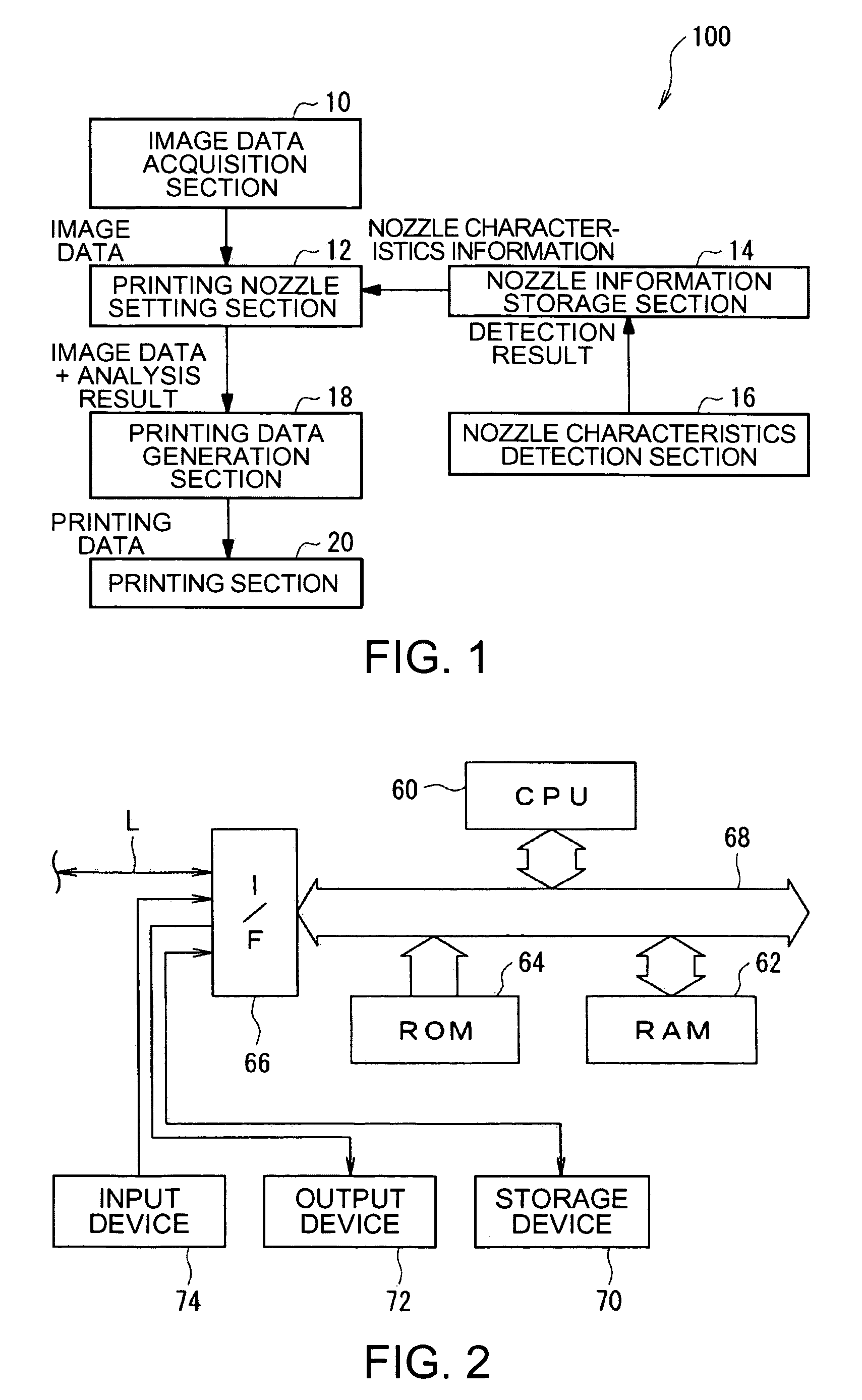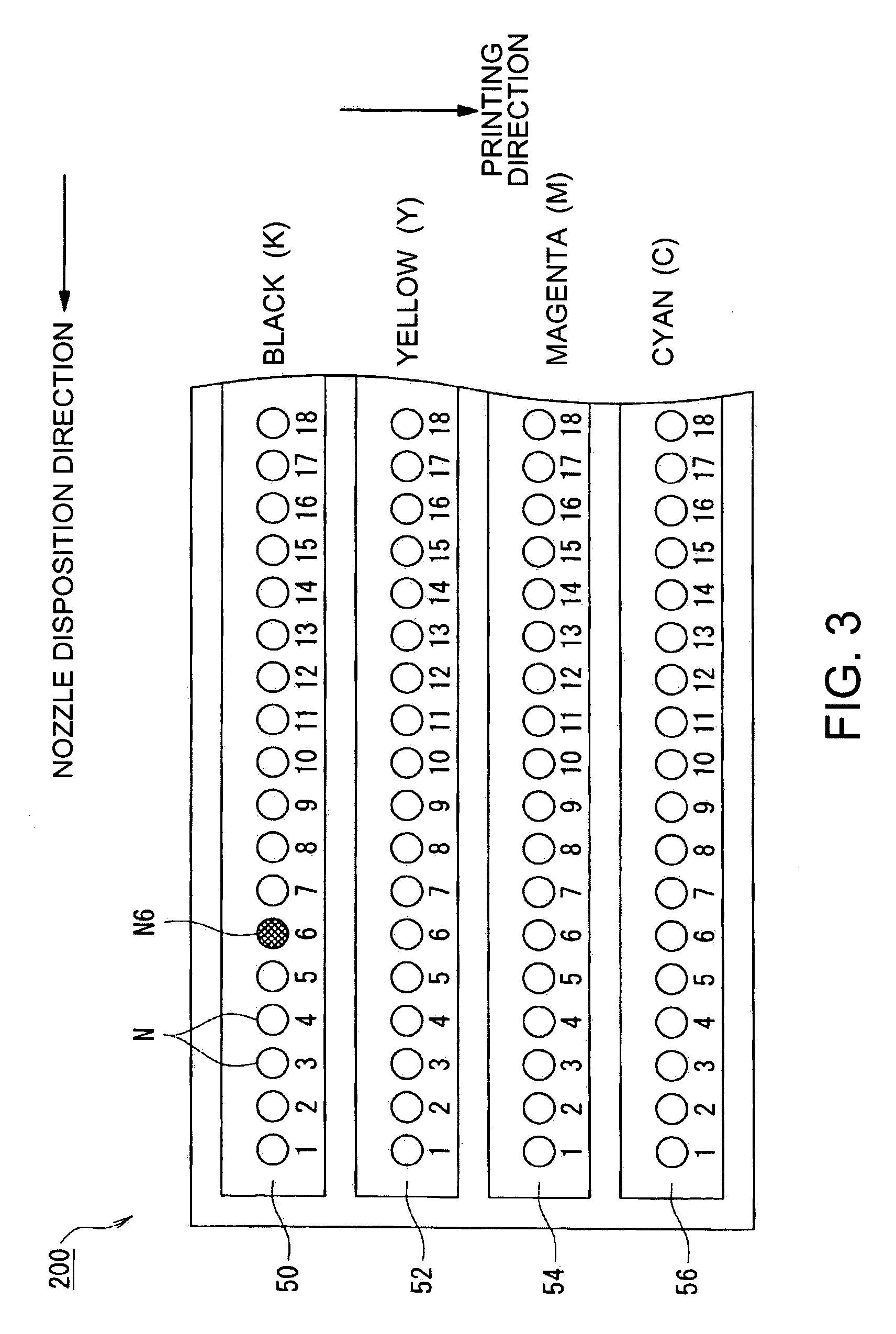Printing device, printing device control program and method, and printing data generation device, program, and method
a printing device and control program technology, applied in the direction of printing, other printing devices, etc., can solve the problems of shortening the printing time compared with other printing devices such as electrophotographic laser printers or others, affecting the quality of printing images, and affecting the printing image quality, so as to reduce the degradation of printing image quality
- Summary
- Abstract
- Description
- Claims
- Application Information
AI Technical Summary
Benefits of technology
Problems solved by technology
Method used
Image
Examples
first embodiment
[0282]Described below is a first embodiment of the invention referring to the accompanying drawings. FIGS. 1 to 13C are all a diagram showing the first embodiment of the invention, i.e., a printing device, a printing device control program and method, and a printing data generation device, program, and method.
[0283]Described first is the configuration of a printing device 100 of the invention by referring to FIG. 1. FIG. 1 is a block diagram showing the configuration of the printing device 100 of the invention.
[0284]As shown in FIG. 1, the printing device 100 is of a line-head type, configured to include: an image data acquisition section 10; a printing nozzle setting section 12; a nozzle information storage section 14; a nozzle characteristics detection section 16; a printing data generation section 18; and a printing section 20. More specifically, the image data acquisition section 10 acquires image data from any external devices, storage devices, or others. The image data is the ...
second embodiment
[0355]Described next is a second embodiment of the invention by referring to the accompanying drawings. FIGS. 14 to 17 are all a diagram showing the second embodiment of the invention, i.e., a printing device, a printing device control program and method, and a printing data generation device, program, and method.
[0356]In the second embodiment, the printing device and the computer system both are in the similar configuration as those in the first embodiment shown in FIGS. 1 and 2. The second embodiment is different from the first embodiment in the respect that the printing data generation process in step S110 of FIG. 5 is replaced with the process of FIG. 14.
[0357]Although the printing data generation process of FIG. 14 is the same as that of the first embodiment in principle, a difference lies in the following respects. That is, a pixel column corresponding to a nozzle causing ink deflection is determined with a dot size-increase ratio. As to the pixel column, every pixel is subjec...
third embodiment
[0391]Described next is a third embodiment of the invention by referring to the accompanying drawings. FIGS. 18 to 23C are all a diagram showing the third embodiment of the invention, i.e., a printing device, a printing device control program and method, and a printing data generation device, program, and method.
[0392]The printing device of the third embodiment is similar in configuration as the printing device 100 of FIG. 1 in the first and second embodiments, except that the nozzle setting section 12 is not provided. The computer system of the third embodiment is similar to that of FIG. 1 in the first and second embodiments, and the printing head is similar to that of FIG. 3 in the first and second embodiments. In the present embodiment, the printing process of FIG. 5 in the first and second embodiments is replaced with the process of FIG. 19, and the printing data generation process of FIG. 6 or 14 is replaced with the process of FIG. 20.
[0393]The third embodiment is different fr...
PUM
 Login to View More
Login to View More Abstract
Description
Claims
Application Information
 Login to View More
Login to View More - R&D
- Intellectual Property
- Life Sciences
- Materials
- Tech Scout
- Unparalleled Data Quality
- Higher Quality Content
- 60% Fewer Hallucinations
Browse by: Latest US Patents, China's latest patents, Technical Efficacy Thesaurus, Application Domain, Technology Topic, Popular Technical Reports.
© 2025 PatSnap. All rights reserved.Legal|Privacy policy|Modern Slavery Act Transparency Statement|Sitemap|About US| Contact US: help@patsnap.com



